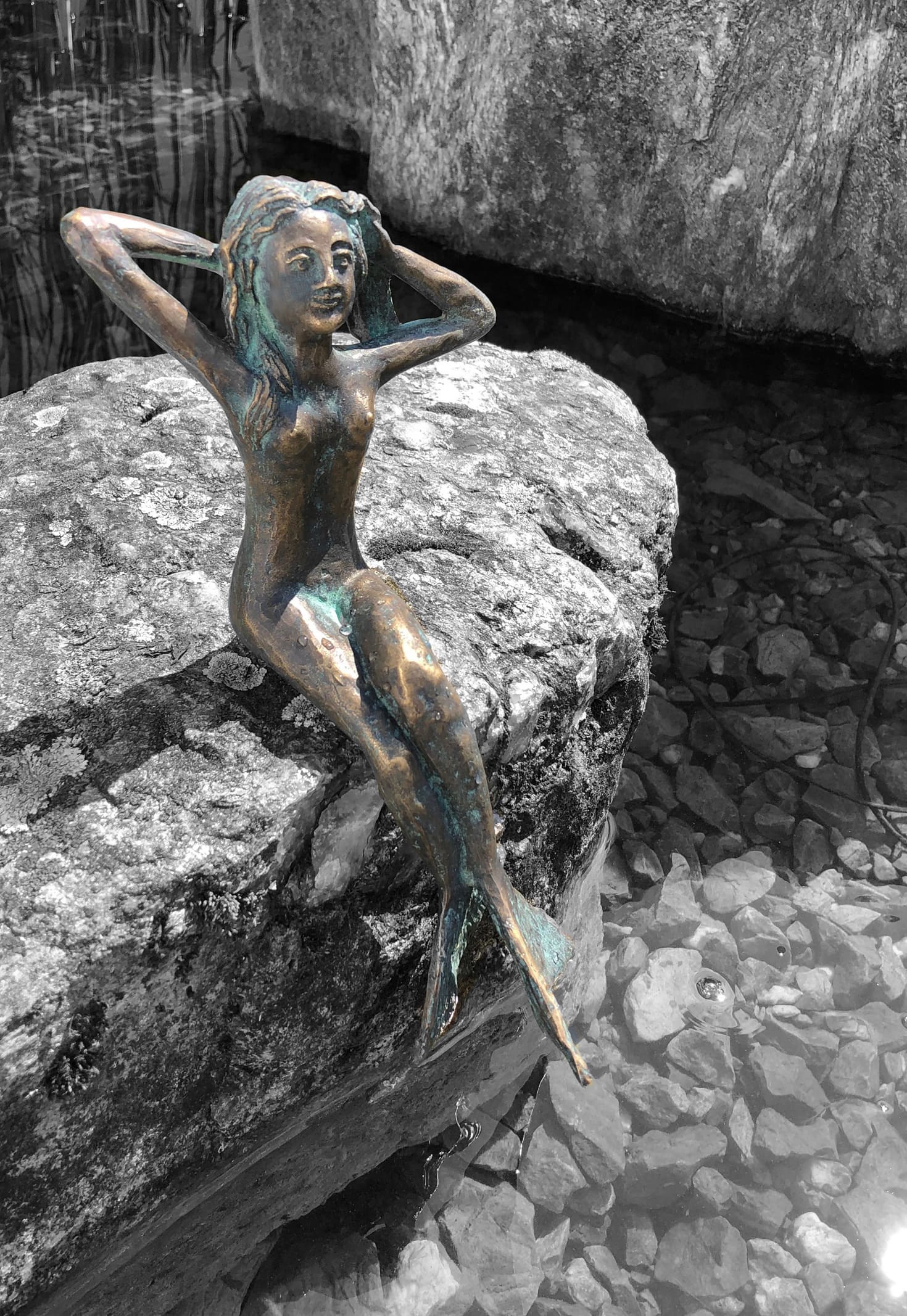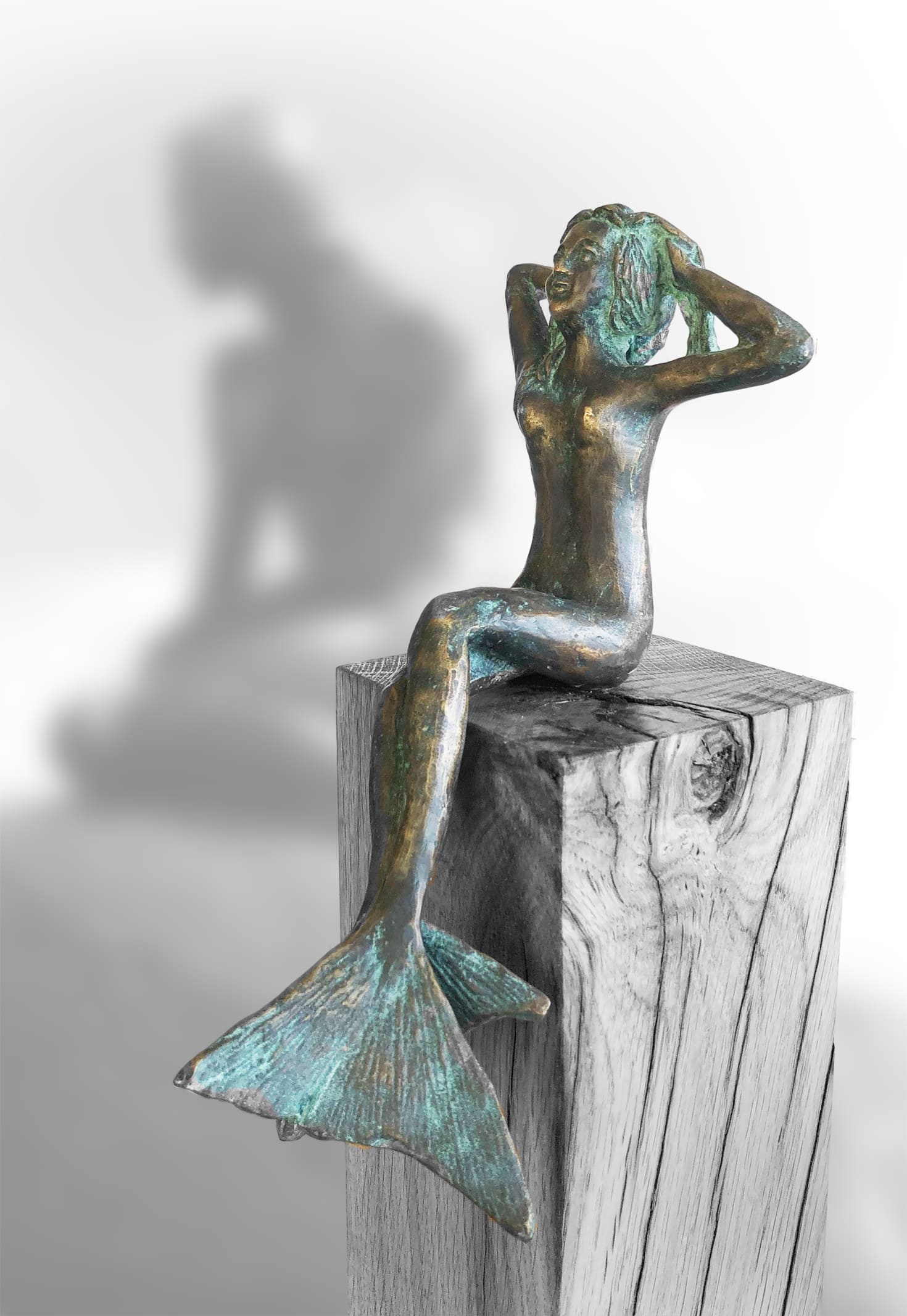The little mermaid
Bronze sculpture, limited Edition 199 pieces.
Dimensions of the sculpture: Height 28,5 x Width 13,5 x Depth 7,5 cm.
Prices and ordering options via Haus & Garten Galerie >
Or just call directly:
Tel .: 0049 2572 952724
Or send me an email:
mail@e-waehning.de
The little mermaid
The fairy tale of the little, pretty mermaid was apparently not only intended to inspire children, but also to convey another, deeper, enigmatic message.
For a long time controversy has been discussed in literary studies about the (possible) homosexuality of Hans Christian Andersen, which he apparently never lived out. Recent studies have attempted to work out the forms of homoerotic masking in Andersen’s fairy tales and novels. As with the fairy tale of the little mermaid he wrote as his secret, unfulfilled love for a good looking friend finally ends when he marries.
The fairy tale is about a love that cannot be reciprocated because it cannot or must not be recognized.
In both his reality and in his fairy tales, it was impossible to confess love for the prince charming. In the fairy tale, because the characters voice was taken, and in reality, because of the taboo of homosexuality. In both realms, the beloved married someone else; a real woman.
If, in the fairy tale, the sea-dwellers have no immortal soul, i.e, no prospect of being taken into the hereafter after their death; then, according to the consensus at that time, people with homosexual inclinations did not have it. However, the mermaid accepts the sacrifice of heartbreak and, despite her nature, receives a soul – according to the biblical citation that no one has greater love than the one who sacrifices himself for his friends (John 15:13). So, too, Andersen may have hoped to find favour with God because of his pain as a result of his homosexuality.



